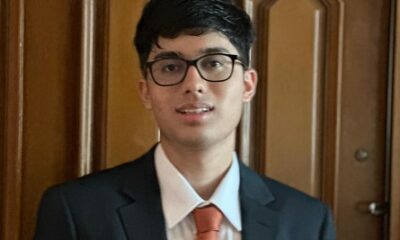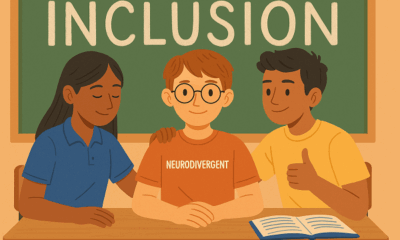News
The 21st century safe school addresses school safety from a holistic perspective
When it comes to the safety of students, it is infinitely better to err on the side of caution.
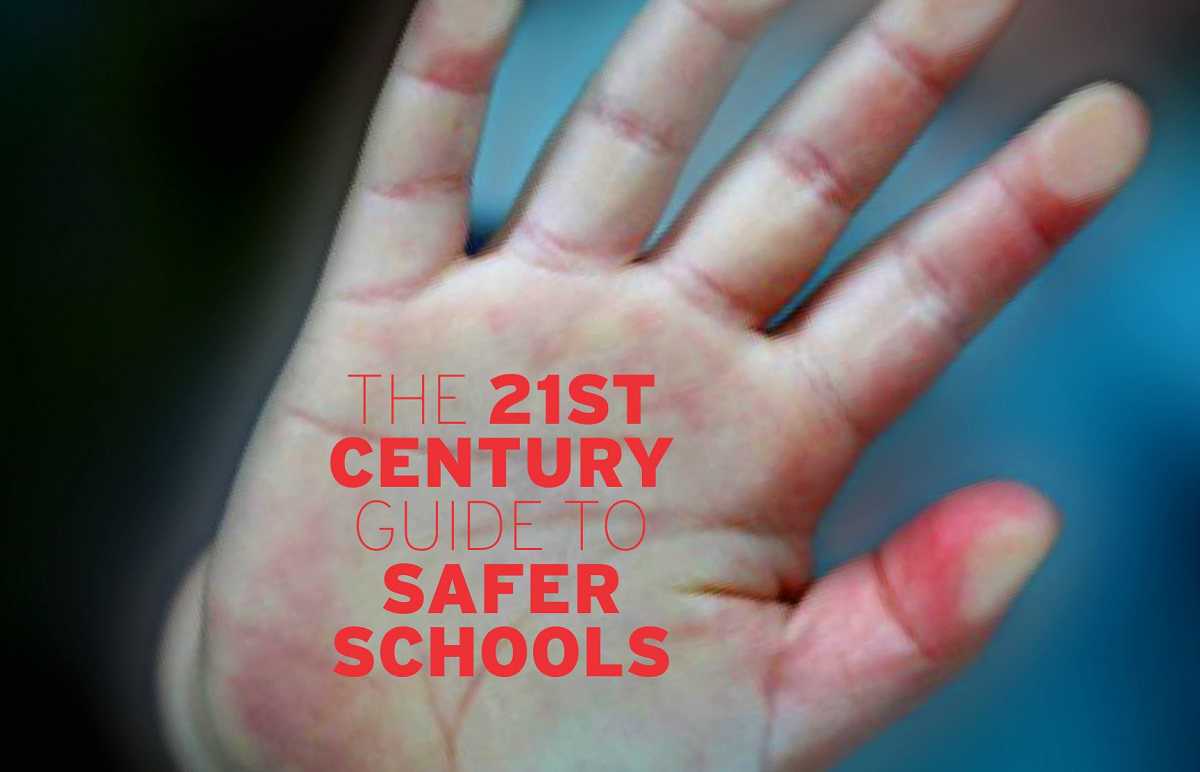
The shock remains but the panic is replaced by a growing resolution: Enough is enough. The recent gruesome incidents (rape/ murder) targeting children in schools, compels a complete relook and rethink of where we are going wrong and what exactly can be done to ensure and secure the safety of our children. Keeping students safe and in an environment where they can flourish is becoming more and more difficult. Children spend a large percentage of their time at school and it is imperative that we make sure that we implement every possible measure to keep them safe.
A new kind of rigorous education is now a must for all children as well, maybe from the very moment they learn to understand the word “safety”. It is not only the parents’ responsibility to make sure their child is safe but also the duty of the school that we equip the minds of our children to do everything in their power to protect themselves from the monsters that roam in society.
Sexual Abuse
A difficult topic but one which demands we shed inhibitions and educate children about the issue and their rights.
In most cases the sexual predator is usually someone the child knows and has interacted with. A teacher, a family member, a neighbour, a friend… any of these people who we come to trust may violate our children.
The concept of ‘Your mind, your body’ should be taught to a child. A child must know that they and only they own their bodies and it is okay for them to say ‘NO’ if they don’t want to be touched. Even if it’s as simple as a hug or a kiss, a child should have the right to say no if it makes them even slightly uncomfortable. They have certain areas as ‘private’ which are off limits to everyone else, including members of the family.
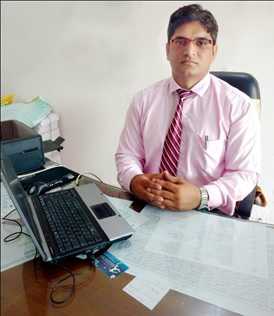
Pushpendra Kumar, Principal, RM Public School, Bijnor
Says Pushpendra Kumar, Principal, RM Public School, Bijnor, “It should be made mandatory for school children to be educated about sex. Since I am from a rural area, I see a lot of parents hesitating to discuss sex with their child. As society leaders we have to take up these responsibilities as sex education is not only for the children of the big cities; it is very important for the children of the rural areas as well to understand and shed inhibitions around the topic.”
Using appropriate terminology is important. It ensures that the child is correctly informed and can talk about it if there is a situation. Making the child feel comfortable during this conversation is a must.

Sonal Ahuja, Director, Shri Ram Foundation Preschool
Sonal Ahuja, Director, Shri Ram Foundation Preschool and Shri Ram Bal Bharti School emphasises on the fact that, “Once we cross the barrier of our own apprehensions, only then will we be able to share many more secrets of ‘sex education beyond the physical act’, with children.”
The mouth, chest area, stomach area, area between the legs, buttocks are off limits to anyone and everyone. That doesn’t mean that everywhere else is okay. Illustrated books on sex education can be used to explain these concepts to children simply and effectively.

Kavita Sanghavi, Principal, MET Rishikul, Mumbai
Sex education is mandatory. According to Kavita Sanghavi, MET Rishikul, “Sex education is imparted through regular sessions by the school counsellor and expert talk on the subject is delivered to students by gynaecologists, psychologists and sexologists from outside.” This awareness goes a long way in keeping children safe.
Bullying
Bullying, one of the largest problems in schools, is a form of abuse that usually occurs when a child or a group of children target another individual and exercise their power over them. It usually happens in areas that have less supervision by the staff or teachers of the school – bathrooms, deserted hallways, cafeterias, at the school bus areas or even in the bus. Bullying comes in many forms – fighting, name calling, teasing, excluding someone repeatedly…. Bullying can be physical or an emotional trauma for the child who is at the receiving end of it.
Bullying isn’t considered a big problem as compared to drug abuse, so most parents and teachers tend to make light of it, but it can have long lasting effects on the child being bullied and on the bully as well.

Sunny Mahajan, Joint Secretary, Pratap World School
If signs of bullying are seen, a parent or teacher must address it immediately. A child disclosing an incident of bullying must be taken seriously. Sunny Mahajan, Joint Secretary, Pratap World School says, “Workshops are conducted with students and there is an Anti-Bullying committee also in place. Statements like these are also highlighted at various places in school. Bullying is strictly prohibited inside the school premises and no such act should go unnoticed or unpunished.”
Don’t brush it away. Certain tell-tale signs can be seen if a child is a victim of bullying. They might withdraw from people and from friends, lose interest in activities they previously used to enjoy, display physical injuries, and show a drop in grades, etc.
If a child is being bullied, they can be helped, first by talking to the parents of the bully, teaching kids to take the non-violent approach to deal with a bully by walking away, talking it out or just by moving away to play with a group of friends. They need to be helped to restore their confidence. The first thing that bullies usually do is to break the self-confidence of a person.
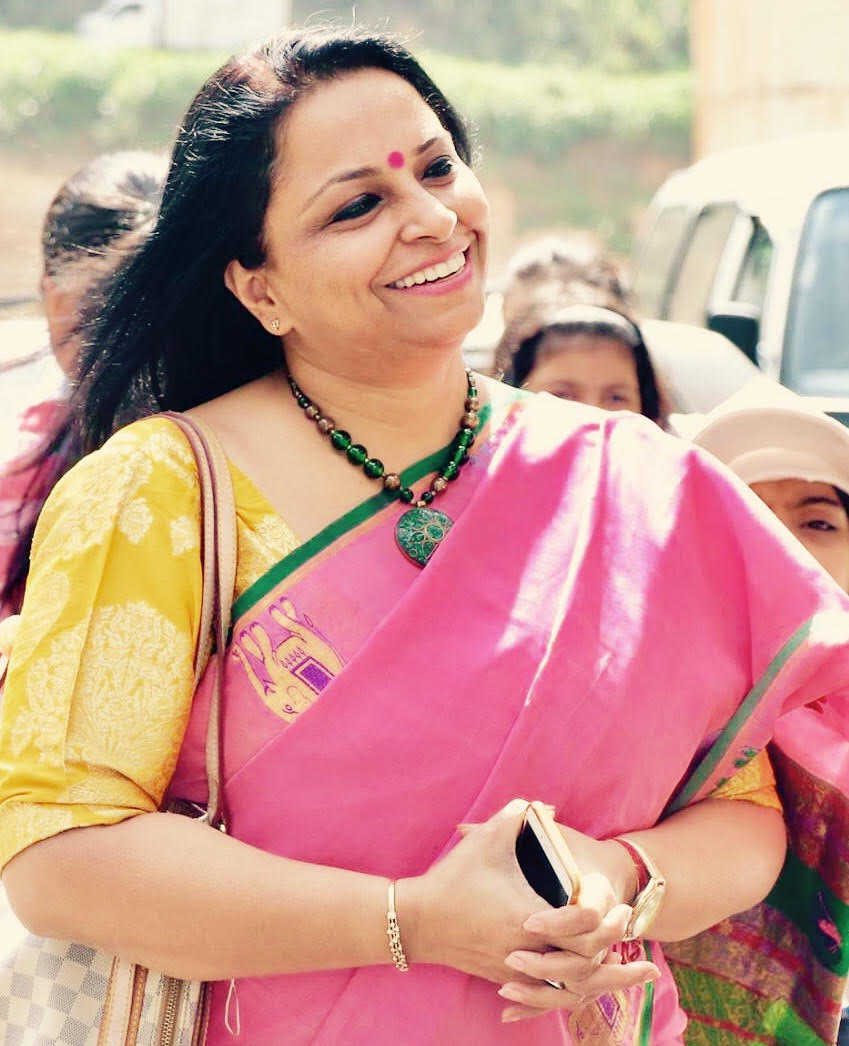
Taruna Kapoor, Vice Principal, The Wisdom Valley Global School, Palwal
Vice Principal, The Wisdom Valley Global School, Palwal, Taruna Kapoor says, “We conduct assessments in our school as to how often bullying occurs, when it occurs and how students and adults intervene. Parents are also made aware of these problems and encouraged to handle them properly. Awareness campaigns and workshops are conducted for the benefit of students. A thorough code of conduct, rules and reporting system is established. Also, a general school culture of acceptance, tolerance and respect is encouraged. Positive social interactions among school staff, students and parents is reinforced. Bullying prevention materials are introduced in the school curriculum and activities.”
She adds, “Bullying can threaten students’ physical and emotional safety at school and can negatively impact their ability to learn. The best way to address bullying is to STOP before it starts.”
Children who are bullies must also be helped as it can cause severe behavioural problems later in life. Children normally turn out to be bullies when they don’t empathise or sympathise with others, they usually like to be the centre of attention, enjoy aggression and love to pick fights. A counsellor at school could talk to the child, and may help get to the root cause of the problem. They might have anger issues, or some changes that are happening at home or they might feel insecure. Counselling may help solve these problems. Children who usually bully have, at some point, been victim themselves.
Learning Disabilities
How receptive are our schools and teachers to kids who have learning disabilities? These kids are most vulnerable and are at a risk for long term academic and social problems. Children who find it difficult in classrooms be it with reading, writing, comprehending, paying attention, proper coordination, memory, and staying organised could be facing learning disabilities. These disabilities can manifest in varying degrees of severity. Some students may struggle with more than one. Proper diagnosis is extremely important, followed by remedial measures to correct their situation. Solutions for children with learning disabilities must focuses on individual achievement, progress and learning to ensure they are successful.
Depression
Although depression is classified as an adult disorder, children are also susceptible to it. When depression is recognized early and treatment is provided, young people can feel and function better in school and life. Schools play a pivotal role in in identifying depression and intervening. School staff must be knowledgeable about depression as the disorder can seriously impair academic and interpersonal behaviour. Some of the signs teachers must look out for are: low tolerance for frustration and negative patterns for thinking, giving up on tasks quickly which they find daunting, doubting their ability to independently complete tasks and solve problems, lethargy, speaking laboriously, difficulty in completely expressing thoughts and ideas, decreased self-esteem and self-worth, and separation anxiety from parents.
In cases where the child is going through depression a home-school communication system has to be developed to share information on the student’s academic, social and emotional behaviour. The best approach taken is often individualised. Children, when helped to overcome their depressed state with patience and perseverance from school staff, home and peers, tend to lead happy and normal lives.
Corporal Punishment
A common disciplinary measure in schools is corporal punishment. Hitting with the hand or with an object like a cane, pinching, excessive physical exercising, twisting of the ear, etc are some forms of corporal punishment. There have been instances where children have lost their lives or have been gravely injured. In most cases the physical hurt can be treated but the psychological and emotional effects can have severe consequences in the future. Mental harassment is also a form of corporal punishment.
There is no excuse to resorting to corporal punishment. It is important to treat every student with respect and care. Children can lose their confidence and self-esteem. With a child being continuously subjected to corporal punishment, the dire consequences could be children developing aggressive or destructive behaviour. They start to think that it is okay to hit someone if not listened to, or they may show cowardice, learning to obey without asking questions or having opinions.
It is the collective responsibility of all to abolish corporal punishment completely. Teachers and educators need to form mutual agreements with students, motivating them and giving them a sense of belonging to the school. It is the right of every human to live a peaceful life without having to face violence in any form.
Online Abuse
Technology cannot be eradicated from children’s lives; it is here to stay. Monitoring them every second of everyday is impossible. So, when they get sucked into the big bad world of virtual reality what do we do? How do we cope with the fact that our kids can be hurt by someone who is sitting thousands of miles away?
The Blue Whale game, which is a 50-task game culminating in a suicide order, is a classic example of children being ensnared online. Developing trust and openness is the way to combat such dangerous influences. Children should be educated to talk openly about things that concern them, whether it is internet related or otherwise. Adults in a child’s life should make sure they don’t blow things out of proportion or overreact to situations but understand the needs of the child so that, in any situation, they feel comfortable to come up and speak to an adult, regardless of the issue.
We need to speak to children, develop their self-worth and give them the confidence that life is not about letting someone or something influence us into the wrong behaviour, and that there are alternatives to combat stress and confidence issues.
Countering the sinister Blue Whale challenge is the Pink Whale challenge or the Baleia Rosa game, which aims to spread not anguish and harm but love and happiness. While the Blue Whale is about depressing messages, self-harm and suicide, Baleia Rosa promotes positivity and encourages people to save lives.
Eventually, youngsters must realize that online challenges are not the ultimate game-changers, and that we all have our inherent traits of strengths and weaknesses – it is up to us to work on them.
Internet Safety
Internet usage has to be monitored continuously as today’s youngsters tend to use the internet heavily these days. It is important to provide kids with safety and protection from online predators.
We must keep an eye out on what they surf online. Children should be taught not to trust everything that they hear or see on the internet and to never reveal any personal information like their real name, which school they go to, their address or even frequent places they hang out. They must also be told not to share their family or friends’ information either.
Most internet browsers have parental controls that can be easily used to set up security safeguards and content filters for language, nudity, sex and violence. Special browsers can also be set up that are kid-friendly. You can allow your child to only have access to this browser.
Children also get sucked into online chats where identity thieves or child predators pose as friends. A constant vigilance has to be maintained to their chat activity.
Children must be allowed to play age appropriate games. Check gaming websites that list the ratings of each game.
Do not allow children to do online shopping by themselves, we never know if they are going into insecure sites to make purchases and could be left vulnerable to online thefts.
School Safety
Schools must ensure that there is CCTV coverage in all corners of the school to ensure that the kids are monitored. When hiring staff and teachers, the school must ensure that they go through the proper channels of hiring, because these are the people who are responsible for a child’s safety and wellbeing. Schools must develop guidelines regarding the hiring process. It shows that the institute has done their homework and that they are a serious organisation and not just a money-churning machine.
Says Kusum Kanwar, Principal, Billabong High International School – Santacruz, “The 21st Century Safe School is a forward-thinking comprehensive approach addressing school safety from a holistic perspective of mental, emotional, physical and social safety. It is much more than physical threats. However, schools at times have a false understanding of school security and poor training and not following best practice guidelines for safety programs, leaves schools vulnerable to threats.
“Students deserve quality education in a learning environment where they feel safe and secure. Ensuring safety training for stakeholders prepares and empowers school administrators, educators and staff to effectively plan and train for a multitude of potential threats risks. It begins with planning and an increased level of awareness of potential threat indicators.
“Safety Training includes creating safe learning environments which are emotionally and psychologically safe, have situational awareness and other critical social and behavioural topics and simulation drills and safety exercises. Many schools have a mindset that training a small number of staff who can train the rest of employees can help, however the outcome will probably not be favourable. Parents need to be a collaborative partner in this endeavour by heightened awareness.
“Safety Training programs need to merge mental health and security practices for creation of a safe school.”
“If a school is aware about the facts related to raising sensible children, then parents automatically start following the culture of the school,” points out Sonal Ahuja, Director, Shri Ram Foundation Preschool and Shri Ram Bal Bharti School. “We hold sessions and make sure that each one of them attend. School activities are not done just as formalities. We make sure that raising a child is a triangular effort: Teacher-Child-Parent. We all have to play our roles equally to reach a set standard or a goal.
“Schools are expected to address behavioural issues, minimize absences, reduce or eradicate mistreatment and bullying, prevent abuse cases and also fully prepare all students regardless of family circumstances or community characteristics. Given these demands, schools may find it difficult to be successful if they are operating in a reactive stance.
“Quality and character of school life can also be improved by welcoming partnerships, which aim at mutual trust and respect, responsiveness, research, reflections and introspections. In this partnership, school, staff, principal, parents, neighbourhood school representatives can develop a plan of action that is responsive to the needs of the school towards safety and security. The goal is not to provide the ‘one size fits all’ set of prescribed action. Schools should now step out of the so called, self-centred approach and bring a more community driven approach, by collaborating and welcoming partnerships – more brains, more reflections and hence most appropriate action plans leading to safe schools.”
Sunny Mahajan, Joint Secretary, Pratap World School also adds, “More personalized care by every member of the school can help in spreading positivity and protection for students. Mobile jammers can be introduced so that children do not become a victim of the Blue Whale game in school premises, particularly boarding schools. CCTV cameras should be present in every nook and corner so that everyone is alert. Police verification of each staff member must be conducted and anyone found with a record should not be kept in school. Psychometric assessment of each and every employee is essential. There should be security guards in school premises at various points as a physical presence always has an edge over any technology. Meditation activities for non-teaching and teaching staff help to maintain a positive balance of energies. Negative thoughts can be channelized. Ensuring more technology driven checks and balance can also help.”
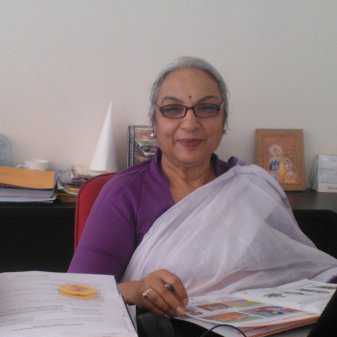
Kalpana Chaudhary, Director, NH Goel World School, Raipur
Kalpana Chaudhary, Director, NH Goel World School, Raipur, says that apart from the regular norms of school safety, “We also do not encourage children driving their own two or four wheelers to school. We encourage children to use school transport. The children who come by their own vehicles have been issued I-cards to the drivers. Their names and phone numbers have to be registered with the school and they have to sign a register and a gate pass while leaving the school. Random and regular breath checking of the support staff specially the transport department is also essential.”
Stay Prepared
Life is full of surprises, not all of them pleasant. It is better that the organisation is prepared for fewer surprises. Institutes must continuously sensitise staff and enhance security measures in all possible ways. Some schools have already increased their security detail. Some of the measures that these schools have taken are:
The school staff and teachers are in the premises much before the students enter the school. After dispersal the building is secured by security staff.
CCTV cameras are installed at strategic points across the school and are regularly monitored by dedicated personnel. Regular maintenance is done to ensure functionality is strictly implemented.
Entry and movement of all adults in the school campus is recorded. The school is secured and the gates are manned by security guards all the time.
Students toilets are clearly demarcated and separate toilets are used by the support staff.
The GPRS system has been incorporated for school buses, while CCTV cameras, first aid and fire extinguishers have been placed in every bus.
Students board and alight from the buses within the school premises under the supervision of the school transport in charge.
Teachers are assigned duties on vantage points during school hours.
The school medical team comprising of doctors and counsellors conduct regular sessions with students on various subjects on safety and otherwise.
Bullying is strictly dealt with. Corporal punishment is not permitted and the physical safety of each child is of utmost importance.
An ambulance is stationed at the campus at all times for any medical emergencies.
Adding to these measures, Kavita Sanghvi, MET Rishikul, recommends that profiles are very clearly outlined to all so that every stakeholder is aware of their roles and responsibilities. Regular monitoring and recording, working closely with parents and earn their support and trust, informing parents of the school safety measures, holding meetings with staff members on child protection policy and their need to look into every aspect of students’ safety, recording of regular inspection by school safety officer, and the Police Clearance Certificate (PCC) of male staff members, are all essential steps.
When it comes to the safety of students, it is infinitely better to err on the side of caution.
This story features as the cover story in our October 2017 issue.
Education
AI to Become a Core Subject from Class 3: India’s Big Leap Toward a Future-Ready Generation

In a landmark move to make India’s school system future-ready, the Department of School Education & Literacy (DoSE&L), Ministry of Education, has announced that Artificial Intelligence (AI) and Computational Thinking (CT) will be introduced as part of the school curriculum from Class 3 onwards, beginning in the academic year 2026–27.
The initiative marks a major step in preparing students for an AI-driven world, ensuring early exposure to technological literacy, ethics, and problem-solving. The curriculum, currently being developed through a consultative process with CBSE, NCERT, KVS, NVS, and States/UTs, will fall under the National Curriculum Framework for School Education (NCF-SE) 2023, in alignment with the National Education Policy (NEP) 2020.
A stakeholder consultation held on 29th October 2025 brought together education leaders, including Prof. Karthik Raman from IIT Madras, who heads the CBSE expert committee responsible for shaping the AI & CT curriculum. The focus is on designing a meaningful, inclusive framework that integrates AI not as an advanced elective but as a foundational skill — comparable to literacy and numeracy in importance.
Shri Sanjay Kumar, Secretary, DoSE&L, emphasised that AI education should be viewed as a universal skill closely linked to real-world applications. “Every child’s distinct potential is our priority. Policymakers must define minimum thresholds and evolve them with changing needs,” he said. He also stressed on teacher training as the backbone of successful implementation, with modules under NISHTHA, and resource materials being prepared by NCERT and CBSE.
The Ministry plans to release AI handbooks and digital resources by December 2025, followed by a grade-specific rollout supported by video-based learning materials and structured training.
By embedding AI education from the foundational years, India aims to nurture a generation that understands, creates, and applies technology ethically — transforming the vision of AI for Public Good into everyday classroom reality.
Education
Dharav Utsav to Celebrate Rajasthan’s Cultural Heritage and Local Talent

Education
Beyond the Syllabus: School Teachers’ Insights on Project-Based Learning
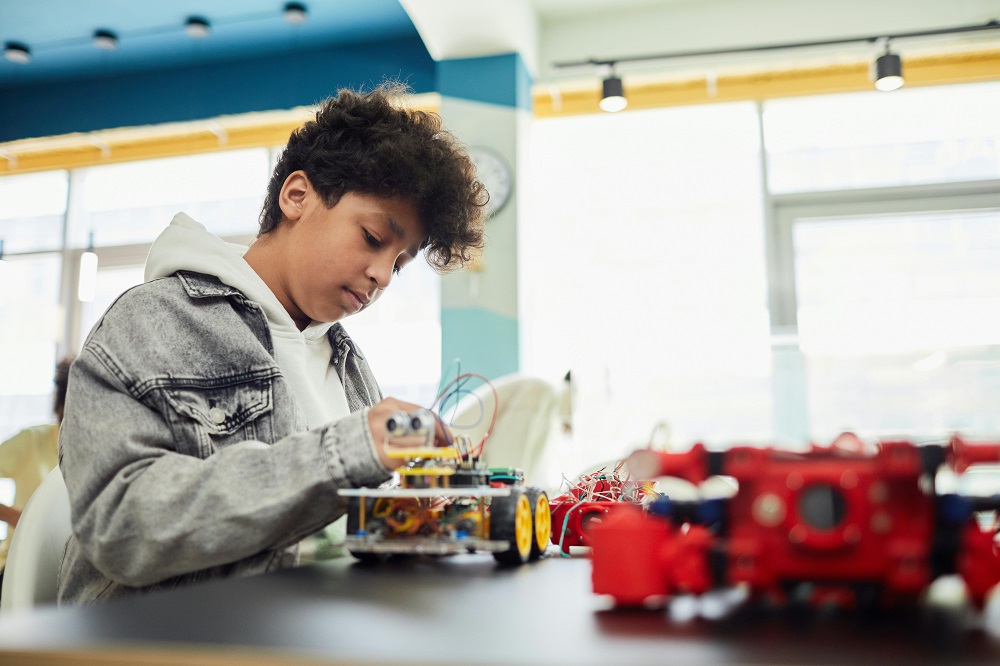
How classroom experiences are being reshaped through projects, inquiry, and authentic learning
As the classroom grows beyond the boundaries of textbooks and blackboards, so too does the role of the teacher, and the very meaning of learning. Project-Based Learning (PBL), once considered a niche innovation, is increasingly being embraced by educators across schools in India. But what happens when PBL moves from theory to practice?
To answer this, we turned to the people at the heart of the learning experience: teachers.
In conversations with educators from diverse school contexts, one theme was clear: PBL is not just a teaching strategy; it’s a transformation in how students learn, engage, and grow.
From Worksheets to Real-World Work: How PBL Differs from Traditional Homework
One of the clearest contrasts teachers observed was how PBL moves learning from repetition to relevance. Traditional homework often reinforces information through rote exercises. PBL, by contrast, asks students to apply their knowledge to solve problems, create products, or investigate issues that matter to them.
One teacher shared how using PBL to raise student awareness about water pollution was a hit in the class. Instead of just assigning problems, the students were made to create awareness posters, conduct surveys in their neighbourhood, and suggest solutions through group presentations. The teacher also noted how the students took the lead, and had an ownership over this project that they usually don’t showcase.
The shift from repetition to application fosters deeper engagement. Several teachers noted that students who previously struggled to stay motivated with homework showed renewed interest when asked to take on real-world challenges.
Changing Roles: Teachers as Facilitators, Not Just Instructors
Project-Based Learning also changes the role of the teacher, who went from being the sole source of knowledge to a guide who supports inquiry and exploration.
One common change teachers noticed was on how they had to let go of control in the classroom. Naturally, the students now had to work on projects on their own, and could only come to the teacher for guidance and help. The teachers noted that they helped their students ask the right questions, find credible sources, and evaluate their work, instead of completely placing the burden of learning on the teacher themselves.
This change isn’t always easy. It requires a shift in mindset and in many cases, rethinking how time is used in class. But most teachers agree: the shift is worth it. PBL has encouraged interdisciplinary approaches, made space for collaborative learning, and created more meaningful student-teacher interactions.
Unlocking Student Potential: What PBL Offers Beyond Academics
Academic performance remains important, but a lot of teachers repeatedly pointed out that PBL nurtures a broader set of skills, like critical thinking, collaboration, communication, and creativity. One teacher particularly noted on how their quietest students became ‘leaders’, and became outspoken when it came to presenting their ideas and projects. While not directly, PBL helped these students find their voices, and find confidence in their effort and abilities.
Students learn to manage time, negotiate roles, and solve problems, skills that aren’t always reflected in exam scores but are vital for life beyond school. For many teachers, the most rewarding aspect of PBL was watching students take initiative, work through failure, and reflect on their learning.
Widening the Circle: Strategies for Scaling PBL in More Classrooms
While the benefits are clear, teachers acknowledged that implementing PBL at a large scale comes with challenges, like limited time, rigid curriculum structures, and unfamiliarity among teachers.
They offered a few practical suggestions for schools and educators considering wider adoption:
- Start Small and Build Confidence: Starting with short projects aligned to the unit you are already teaching introduces PBL in an easy manner. This way, teachers do not have to worry about overhauling their curriculum, or for making huge changes to their current teaching methods.
- Encourage Collaboration Among Teachers: Joint planning across subjects makes projects richer and more integrated. This also promotes interdisciplinary skills among students, and allows them to craft solutions using different subjects and skillsets.
- Make Time for Reflection: Embedding opportunities for students to present, critique, and reflect helps solidify learning. By reflecting on their projects and mistakes, they can understand how they can improve their approach to PBL.
- Support Professional Development: Teachers emphasized the need for ongoing training, not just one-off workshops but long-term spaces for peer sharing and mentorship. This continuous development would cement and solidify the methods and outcomes that will maximise using PBL for student benefits
Looking Ahead: Redefining Success in Education
PBL challenges traditional ideas of what learning looks like. It pushes students to move beyond memorization, and it challenges teachers to rethink their methods. But more than anything, it opens up the classroom to ideas, to communities, and to possibilities. No longer are students just preparing for exams, but also for the complex world outside school.
As educators continue to navigate the changing landscape of education, the insights from teachers point us toward a hopeful future, where learning is meaningful, relevant, and rooted in real-world experience.
This article is authored by Mrs. Padmashini M Patro, Principal, Air Force School Bamrauli
Education
Over 1 Lakh Single-Teacher Schools Educate 33 Lakh Students Across India: MoE Data
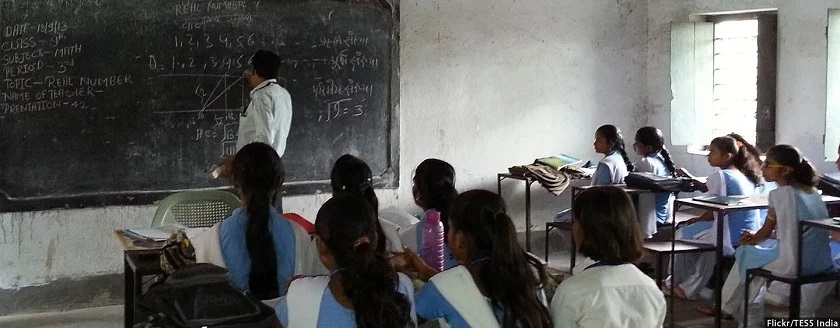
Education
Over 3 Lakh Schools Join Hands for India’s Largest-Ever Innovation Challenge: Viksit Bharat Buildathon 2025

In a historic moment for Indian education, more than 3 lakh schools across the country came together to participate in the Viksit Bharat Buildathon (VBB) 2025, the largest live school innovation challenge ever organised in India. The nationwide event was inaugurated in New Delhi by Union Education Minister Dharmendra Pradhan, marking a significant milestone in the Government’s efforts to embed creativity, innovation, and problem-solving into the school ecosystem.
The Viksit Bharat Buildathon, organised by the Department of School Education & Literacy (DoSEL) in collaboration with Atal Innovation Mission (AIM), NITI Aayog, and AICTE, saw over one crore students from Classes 6 to 12 working simultaneously during a 120-minute live innovation session. Students teamed up in groups of three to five to design prototypes and propose solutions under four themes — Atmanirbhar Bharat, Swadeshi, Vocal for Local, and Samriddhi.
While inaugurating the event, Minister Pradhan interacted virtually with students of PM SHRI Government High School, Khorda, Odisha, and later visited Delhi Public School, Mathura Road, and Kendriya Vidyalaya No. 2, Delhi Cantt. Commending students for their creativity, he said, “The vision of Viksit Bharat will be realised through the innovative spirit of our young learners. These ideas will not only address domestic challenges but also create global models for change.”
The event drew widespread participation, with Uttar Pradesh leading the numbers (78,206 schools), followed by Maharashtra (41,198), Gujarat (20,017), and Madhya Pradesh (18,129). Other states like Tamil Nadu (16,370), Bihar (15,732), Odisha (12,344), and Haryana (11,567) also recorded impressive engagement, showing the growing momentum for grassroots innovation across regions. Even smaller territories like Ladakh (358), Puducherry (149), and Andaman & Nicobar Islands (171) participated actively, reflecting the nationwide reach of the initiative.
According to Sanjay Kumar, Secretary, DoSEL, this unprecedented participation signals a transformation in how Indian students approach learning. “This one-of-a-kind movement strengthens innovative thinking and enhances the problem-solving capabilities of students across India,” he said. Deepak Bagla, Mission Director of AIM, called the initiative a “mass movement connecting schools in remote villages with those in metropolitan cities through innovation.”
A New Chapter for Indian Education
The Viksit Bharat Buildathon signifies more than just a hackathon — it reflects a systemic shift in Indian education towards experiential and innovation-led learning. As schools across the country engage in design thinking, tinkering, and collaboration, students are being equipped not just with knowledge, but with the mindset and skills needed to build a self-reliant India.
By nurturing creativity from an early age and fostering partnerships between schools, government bodies, and industry, the Buildathon is shaping a generation ready to contribute to the vision of Viksit Bharat 2047 — a developed, empowered, and innovation-driven India.
Education
17-year-old Innovator Designs Learning Tools for the Visually Impaired
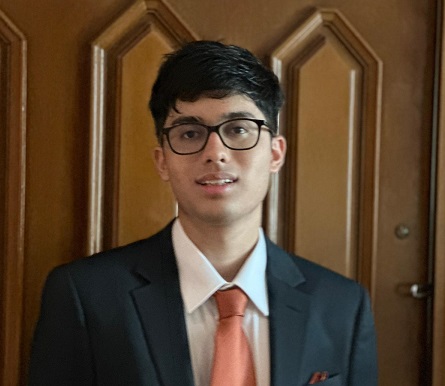
At just 17, Singapore-based student Ameya Meattle is proving that age is no barrier to impact. What began as a small idea to make education more accessible has evolved into a mission that is transforming how visually impaired learners experience learning and skill development.
Ameya founded Earth First at the age of 14 — a social enterprise that helps visually impaired individuals “earn and learn” by creating sustainable, eco-friendly products. Working with eight NGOs across India and Singapore, the initiative has trained more than 100 visually impaired students and launched over 23 sustainable product lines, from tote bags and jute placemats to macramé planters. Each design is adapted to provide hands-on learning opportunities and help trainees gain confidence in both craft and enterprise.
Beyond social entrepreneurship, Ameya has focused deeply on education and technology. He led a Python programming course for 50 visually impaired students, designing custom training modules that made coding accessible through screen readers and tactile tools. By introducing technology as a viable career pathway, Ameya hopes to help students move from manual tasks to high-skill, digital opportunities.
His work also extends into assistive technology research. Under the mentorship of Dr. Pawan Sinha at MIT, Ameya developed a VR-based diagnostic game to assess visual acuity in children — turning the process into an interactive experience rather than a clinical test. The tool is being piloted at MIT’s Sinha Lab and with Project Prakash in India, helping doctors evaluate and track visual development before and after eye surgeries.
In addition, during his internship at the Assistech Lab at IIT Delhi, Ameya worked on designing tactile STEM teaching aids, such as accessible periodic tables and coding tutorials for visually impaired learners. His goal, he says, is not just to innovate but to make scientific learning inclusive and joyful for all.
Ameya’s work highlights how education, empathy, and innovation can intersect to create a more equitable future — one where technology serves not just progress, but people.
Education
Ministry of Education Urges Schools to Adopt UPI for Digital Fee Payments, Promoting Ease of Schooling
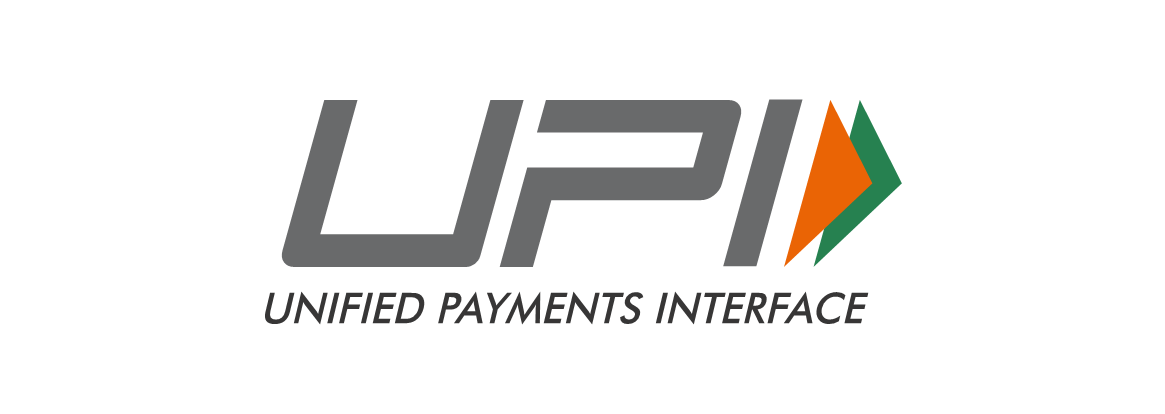
Education
Supreme Court Calls for Early Sex Education in Schools: “Not from Class IX, But from a Younger Age”

In a landmark observation, the Supreme Court of India has emphasised the urgent need to introduce sex education at a younger age, rather than waiting until Class IX as is the current norm. The apex court stated that children should be informed and sensitised about the physical and emotional changes that accompany puberty — and taught the necessary care and caution that come with it.
The observation came from a Bench comprising Justice Sanjay Kumar and Justice Alok Aradhe, which noted that the absence of early sex education leaves children vulnerable to misinformation and misunderstanding during their formative years.
“Sex education should be provided to children from a younger age and not Class IX onwards. It is for the authorities concerned to apply their mind and take corrective measures so that children are informed of the changes that happen after puberty,” the court stated.
The Bench made the remarks while hearing an appeal filed by a 15-year-old boy, who had been denied bail by the Allahabad High Court in a case under Sections 376 and 506 of the Indian Penal Code (IPC) and Section 6 of the Protection of Children from Sexual Offences (POCSO) Act. Recognising that the accused was himself a minor, the Supreme Court had earlier granted him bail in September 2025.
In the same case, the Court had directed the Government of Uttar Pradesh to submit an affidavit explaining how sex education is currently implemented in schools. The state responded that sex education is introduced only in Classes IX to XII, following NCERT guidelines. However, the Bench expressed concern over this delayed introduction and urged policymakers to revisit the framework to ensure children receive age-appropriate education much earlier.
The Court set aside the High Court’s order and made the juvenile’s bail permanent until the completion of the trial. More importantly, its remarks have reignited the national debate on the need for comprehensive sexuality education in India, which many experts argue is crucial to preventing abuse, reducing stigma, and promoting healthy development among adolescents.
Education experts have long maintained that early, factual, and inclusive discussions about puberty, consent, and emotional health must begin before adolescence — ideally in primary school — to prepare children for real-world experiences and relationships. The Supreme Court’s observation is expected to prompt renewed policy discussions on revising the sex education curriculum nationwide.
Education
Delhi Government Launches Online First Aid Training Programme for Teachers
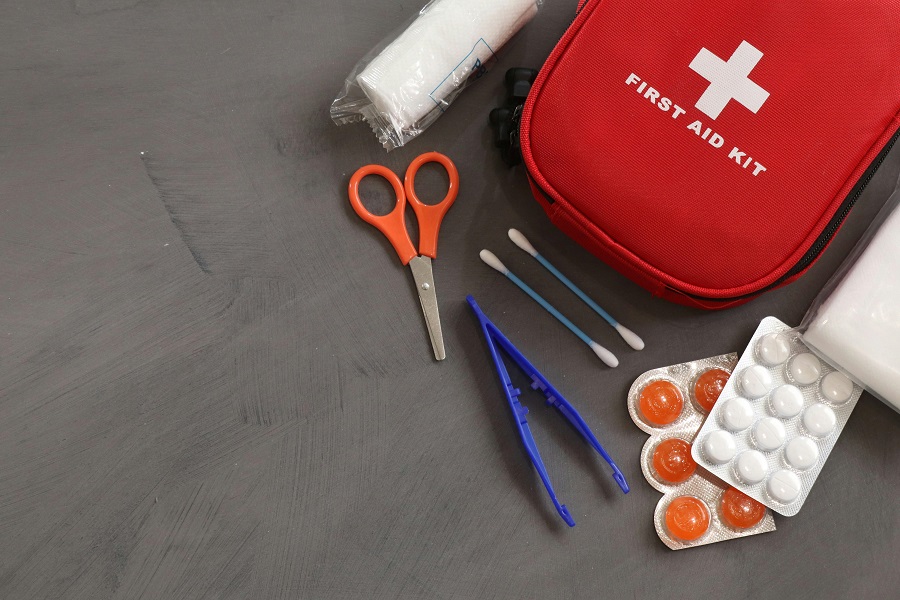
The Delhi government has introduced a new online training programme designed to equip teachers with essential first aid skills to respond effectively during health emergencies in schools.
According to a circular issued by the State Council of Educational Research and Training (SCERT), the course — titled “First Aid – To Improve Human Reaction in Challenging Health Situations” — will be conducted under the Massive Open Online Course (MOOC) format. The training is mandatory for all teachers and will run from October 9 to October 19, 2025.
The initiative aims to increase awareness about the importance of readiness in medical emergencies and the role of first aid in saving lives. It will also educate teachers on maintaining functional first aid kits in classrooms and demonstrate practical methods for administering care in real-life situations.
Teachers must achieve at least 70 per cent in each assessment to complete the course successfully. Upon completion, participants will receive certificates, which can be downloaded directly from the platform.
By introducing this online training, the Delhi government seeks to build a culture of preparedness and safety across schools. With thousands of teachers gaining basic emergency response skills, the initiative is expected to significantly improve the ability of schools to manage sudden health crises and ensure student well-being.
Education
Atal Innovation Mission and IFCCI Join Hands to Scale Up Atal Tinkering Labs Across India

The Atal Innovation Mission (AIM), NITI Aayog, and the Indo-French Chamber of Commerce & Industry (IFCCI) have signed a Statement of Intent (SoI) to strengthen and expand the Atal Tinkering Labs (ATLs) network across India. The agreement, formalised at the French Embassy in New Delhi during IFCCI’s 3rd CSR Connect Day 2025, marks a significant step in fostering STEM education, digital literacy, and innovation among school students.
The event was attended by H.E. Thierry Mathou, Ambassador of France to India, who praised the partnership for deepening Indo-French collaboration in social development. He highlighted that 2026 will mark the India–France Year of Innovation, encouraging businesses from both nations to invest in sustainable, community-driven impact initiatives through Corporate Social Responsibility (CSR).
Through this partnership, IFCCI and AIM aim to mobilise CSR contributions from French and Indian companies to improve infrastructure, enhance hands-on learning experiences, and bridge the gap between industry and education. IFCCI, which has already executed over 86 CSR projects benefiting more than 15,000 people across India, will leverage its network to support ATL expansion, particularly in underserved schools.
Mission Director of AIM, Deepak Bagla, noted that over 11 million students have already benefitted from the ATL initiative, which he called “one of the world’s largest grassroots innovation programs.” He said, “From the northernmost village school to the southernmost, innovation is thriving everywhere. The real story lies not in the scale, but in the creativity of the ideas students are building.”
A Shared Vision for Inclusive Innovation
The collaboration aims to make innovation accessible to all students by promoting digital tools, teacher training, and student challenges that inspire curiosity and problem-solving. IFCCI Director General Payal S. Kanwar added, “This partnership is a step forward in empowering youth with 21st-century skills. We aim to bridge the gap between industry and education and make innovation accessible to every student, especially in underserved regions.”
However, as the Atal Tinkering Labs expand, addressing operational challenges remains crucial. Reports by UNICEF and The New Indian Express underscore that access to digital tools alone cannot guarantee innovation without inclusive design, mentorship, and ethical technology use. UNICEF’s SPARK Labs model, which links creativity with social change, offers a useful reference — encouraging schools to blend innovation with empathy, inclusion, and purpose.
Challenges and Areas for Improvement
Despite the ATL program’s remarkable reach, a 2023 assessment highlighted several gaps. Nearly 58% of ATL teachers lack a STEM background or structured training, resulting in inconsistent mentorship. In many schools, ATL sessions are not integrated into the timetable, limiting daily engagement. Moreover, less than 10% of schools report active student participation due to limited guidance and parental scepticism about its academic value.
Operational hurdles like irregular funding, defective equipment, and poor monitoring systems have also hindered consistent performance. Some schools struggle to maintain labs once initial grants are exhausted, while others lack a mechanism to track outcomes effectively.
The Way Forward
For the AIM–IFCCI partnership to achieve its full potential, a few key steps can strengthen impact:
-
Teacher Capacity Building: Introduce regular certification-based training programs, preferably in collaboration with universities and tech firms.
-
Curriculum Integration: Embed ATL projects within school timetables and link them with existing subjects like science and mathematics.
-
Mentorship Networks: Connect schools with local innovators, start-ups, and CSR professionals for year-round engagement.
-
Monitoring Systems: Deploy digital dashboards to track participation, tool usage, and project outcomes for better transparency.
-
Community Awareness: Conduct parent and community outreach sessions to showcase how tinkering enhances academic learning and future employability.
If executed effectively, this Indo-French collaboration can redefine India’s innovation ecosystem by turning every school into a space where curiosity meets creation. The challenge now lies in ensuring that every student, regardless of background, not only has access to a lab but also the guidance and confidence to build something meaningful within it.
-
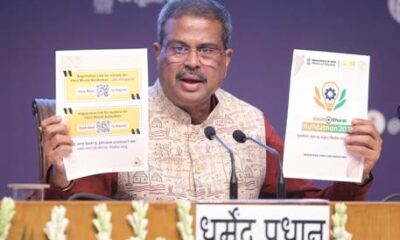
 Education3 months ago
Education3 months agoMinistry of Education launches Viksit Bharat Buildathon 2025 to Ignite Innovation among School Students
-
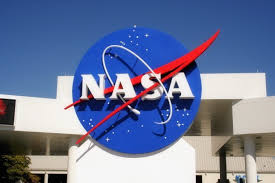
 Education3 months ago
Education3 months agoMaharashtra Education Department Plans Students’ Tour to NASA
-
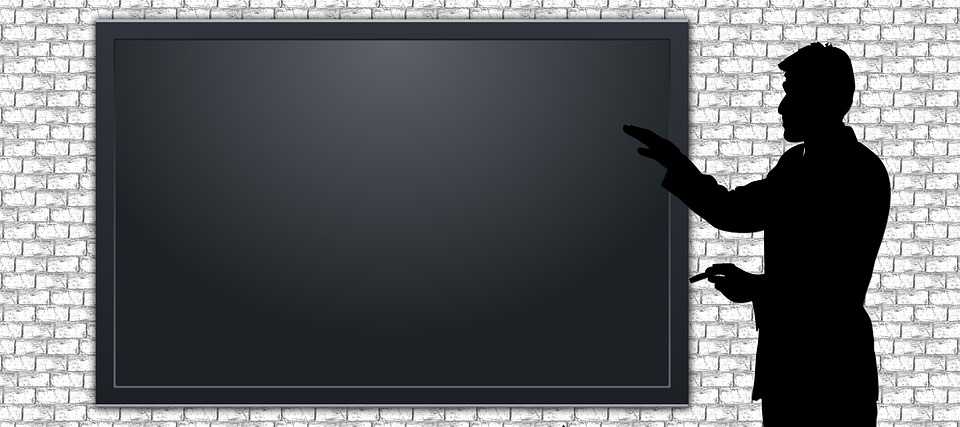
 Education3 months ago
Education3 months agoGovernment Plans to Introduce Skill-Based Learning in Class 11 and 12 Curriculum
-
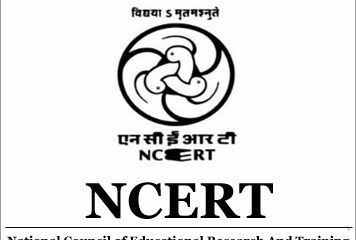
 Education3 months ago
Education3 months agoNCERT to Grant Equivalence to Class 10 and 12 Certificates Across Boards for Admissions and Jobs
-

 Education3 months ago
Education3 months agoClass 11 Student Navya Mrig on a Mission to Bust Myths About Organ Donation
-

 Education3 months ago
Education3 months agoSupreme Court Calls for Early Sex Education in Schools: “Not from Class IX, But from a Younger Age”
-

 Education3 months ago
Education3 months agoIndia Loves its Teachers, Just Not Enough to Pay Them: India Today Reports
-

 Education3 months ago
Education3 months agoAtal Innovation Mission and IFCCI Join Hands to Scale Up Atal Tinkering Labs Across India
-

 Education2 months ago
Education2 months agoBeyond the Syllabus: School Teachers’ Insights on Project-Based Learning
-
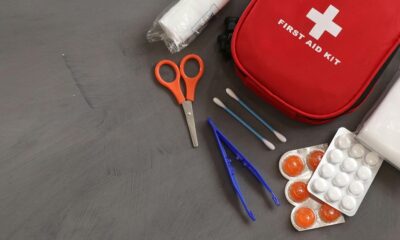
 Education3 months ago
Education3 months agoDelhi Government Launches Online First Aid Training Programme for Teachers












